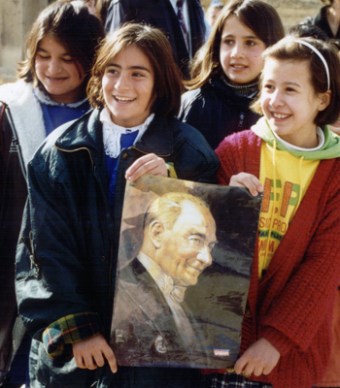We really wish the Turkish Tourist Office would market their country more aggressively in the United States. It seems few Americans know what it has to offer.
Although it’s a Muslim country and mostly in Asia (a small part of the country is in Europe), modern Turkey really has much more in common with Europe than with its other neighbors.
The founder of the Turkish Republic, Mustafa Kemal Ataturk (Ataturk means Father of Turkey) led the country from the ruins of the Ottoman Empire to independence in 1923. He took a country that had been part of a vast empire for six hundred years and was largely stuck in the Middle Ages, and thrust it right into the 20th century in only a few years.
His modernizing included democratic, secular government, free education for all, extensive economic development, and equal rights for women. Women in Turkey had the vote in 1931, years before France, Italy and Ireland.
While Ataturk and his one political party didn’t preside over a perfectly democratic system, it was a giant leap away from the absolute power of the Ottoman sultanate and laid the ground for the development of an egalitarian, liberal society.
Today, Turkey’s modern, forward looking society hustles around jaw-dropping monuments from Ottomans, Byzantines and Greeks. In Istanbul, you practically trip over spectacular buildings, famous feats of engineering that changed everything. The civilizations centered there certainly changed everything. History pivoted in Turkey many times.
There’s not time or space in a single blog post to extol the wonders of Turkey from border to border, so we’ll take it in sections. Istanbul is an obvious starting point, and alone, worthy of a series of posts. It’s Turkey’s largest city and has been a major power center for millennia. It started as the Greek settlement of Byzantium in the 7th century BCE. In the 4th century CE, the emperor Constantine made it the capital of the Roman Empire in the east, and it was renamed Constantinople. After the fall of the Roman Empire in the west 100 years later, Constantinople carried on as the center of the Byzantine Empire for another 1,000 years, until conquered by the Ottoman Turks in the 15th century and hence forth known as Istanbul.
Musical Interlude
Istanbul was Constantinople
now it’s Istanbul, not Constantinople
been a long time gone, Constantinople
now it’s Turkish delight on a moonlit night…
Lucky for us, the Byzantines and the Ottomans were ostentatious builders. If you love looking at architecture, there you go. If you’re more inspired by great shopping or dining, Istanbul has it, and I assert that any pastime is enriched when framed by genius in stone. To sweep the cobbles around the Hagia Sophia would be an honor. Have I just invented a new form of tourism? Mop & Burnish Great Monuments of the World! Book Now! Space is limited. (That’s a joke, in case it’s not clear. We don’t have such a tour; however, if you’re interested, we can look into it.)
Istanbul surface skimmed, more next time.


Turkey is most definitely on my lust of top ten places to go
LikeLike
Yes! It’s an amazing place, so much to see…
LikeLike